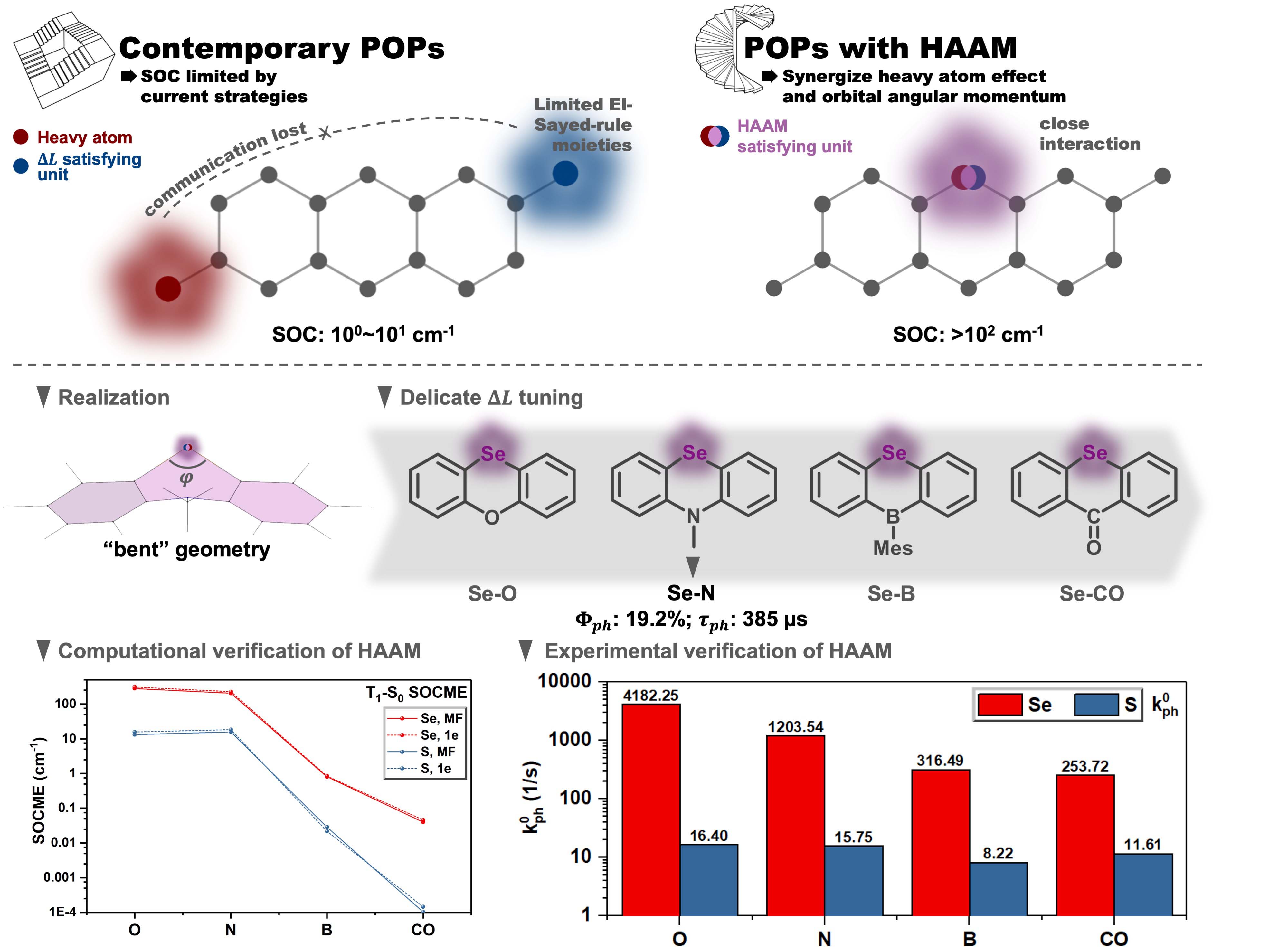First Principles Design of Organic Phosphors

Metal-free purely organic phosphors (POP) may emit phosphorescence at room temperature.
"metal-free" distinguishes them from organometallic complexes, which generally rely on
expensive and toxic noble metal elements (Ir, Pt, etc.) as light emitting centers. The
key to POP design is connecting structures with excited state profiles to allow efficient
triplet excitons harvesting, which is generally governed by spin-orbit coupling (SOC) to
alleviate spin-forbidden triplet-singlet transitions. However, efficient SOC relies on
heavy nuclei to generate large electronic momentum, and absence of metal center makes it
extremely difficult to harvest triplet excitons from POPs. For decades, POPs, especially
in their pristine single-molecule state, were known to exhibit long lifetime in the 10
millisecond to second regime with low or negligible phosphorescence quantum yield at room
temperature, where considerable non-radiative decay competes with radiative triplet emission.
These limitations significantly restricts POPs' performance in solid-state lighting, which
necessitates a universal design rule for organic molecules to exhibit fast and efficient
phosphorescence.
We have presented a new design strategy for fast and efficient POPs, named as the “heavy
atom-oriented orbital angular momentum manipulation” (HAAM). The HAAM concept envisioned
that the best amplification of the intrinsic SOC constants could be achieved when orbitals
of heavy atoms directly undergoes angular momentum change during the triplet-singlet
transition. We found Selenium as a perfect heavy atom candidate satisfying the HAAM concept
where its soft 4p electrons could be readily coupled to nearby molecular orbitals and the
px-pz transition considerably varies the orbital angular momentum which, serendipitously,
sits on a heavy nucleus. The HAAM strategy was subsequently verified and benchmarked both
computationally and experimentally using a series of selenium-based POPs. Therefore, the
theory, simulation, and structural design nicely converge.
Impact of the HAAM concept was substantial in the community. As a direct bridge was
established between orbital angular momentum manipulation and structural design, the HAAM
strategy projected an expanded molecular library of fast and efficient POPs and a wider choice
of heavy atoms including Selenium and even Tellurium. These molecular backbones demonstrated
near-unity phosphorescence quantum yield at room temperature and pushed the phosphorescence
lifetime below 300 microsecond. Efficient organic light-emitting diodes (OLEDs) with external
quantum efficient over 10% were demonstrated using these candidates. Our work also inspired
other researchers to continuously expanded the molecular library and optimize their
performances in OLEDs, sensors, and data encryption.
Read more:
Shao, W.; Kim, J.
Metal-Free Organic Phosphors toward Fast and Efficient Room-Temperature Phosphorescence.
Acc. Chem. Res. 2022, 55(11), 1573–1585.
Shao, W.; Jiang, H.; Ansari, R.; Zimmerman, P.; Kim, J.
Heavy Atom Oriented Orbital Angular Momentum Manipulation in Metal-Free Organic Phosphors.
Chem. Sci. 2022, 13(3), 789-797.
Lee, D. R.; Lee, K. H.; Shao, W.; Kim, C. L.; Kim, J.; Lee, J. Y.
Heavy Atom Effect of Selenium for Metal-Free Phosphorescent Light-Emitting Diodes.
Chem. Mater. 2020, 32(6), 2583–2592.